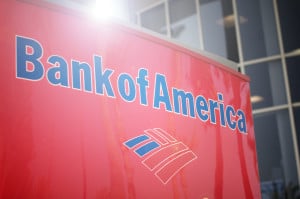Bank of America Corp., the No. 2 U.S. bank by assets, reported an 18 percent slide in quarterly profit on Thursday as its trading business was hit by concerns about a global economic slowdown and uncertainty about U.S. interest rates.
BofA, one of the biggest U.S. lenders to the oil and gas industry, also said it had set aside 30 percent more money to cover sour loans, mainly to the struggling energy industry.
The profit was in line with the market’s low expectations after what was widely seen as the grimmest first-quarter for the banking industry since the financial crisis.
Revenue in five of BofA’s six main businesses fell, pulling down total revenue below Wall Street’s expectations. Only consumer banking grew.
Market volatility stemming from a slide in commodity and oil prices, worries about China’s economy and uncertainty about interest rates hit trading activity globally in the quarter, particularly in January and February.
Adjusted revenue from bond, currency and commodities trading slumped 17.5 percent to $2.26 billion.
BofA’s shares, which fell 20 percent in the quarter, were down 1 percent in premarket trading after rising 3.9 percent on Wednesday following better-than-expected earnings from JPMorgan Chase & Co., the biggest U.S bank.
JPMorgan, whose results had helped to allay some concerns about the quarter for U.S. banks, reported a 13.4 percent decline in bond trading revenue.
Market activity so far in April, as in March, has been stronger than the first two months of the year “so, we are optimistic,” BofA CFO Paul Donofrio said on a call with reporters.
Strong Credit Quality
Charlotte, North Carolina-based BofA said its total provisions jumped to $997 million in the quarter ended March 31.
A report by Barclays estimated that 2.3 percent of BofA’s total loans were energy-related at the end of December.
“The bank feels very good about its energy reserves,” Donofrio said.
About a third of publicly traded oil and gas-related companies, with more than $150 billion in debt, are at high risk of bankruptcy this year, according to a report by auditing and consulting firm Deloitte.
This week alone, Peabody Energy Corp., the biggest U.S. coal miner, and Energy XXI Ltd., a significant oil and gas producer in Louisiana, Texas and the Gulf of Mexico, filed for bankruptcy protection.
Overall credit quality remained strong, the bank said, while consumer portfolios continued to improve and commercial portfolios remained stable except in the energy sector.
BofA’s net income attributable to common shareholders fell to $2.22 billion, or 21 cents per share in the quarter. Excluding items, the bank earned 20 cents per share, matching the average analyst estimate.
Results in the latest quarter included pretax adjustments of about 12 cents per share.
The bank’s adjusted revenue of $19.57 billion fell short of the average analyst estimate of $20.30 billion, according to Thomson Reuters.
Mortgage banking revenue slumped 37.6 percent to $433 million. JPMorgan said its revenue from the business rose 7 percent, while Wells Fargo reported a 3.3 percent increase.
“Our key conclusion from the results is that (BofA) continues to make progress on its key priorities of growing core loans and reducing core expenses … despite the deterioration in energy lending,” Guggenheim analyst Eric Wasserstrom wrote in a client note.
BofA’s non-interest expenses fell 6.4 percent to $14.82 billion. Under CEO Brian Moynihan, the bank has been slashing billions of dollars in costs to try to make up for weak revenue.




 |
| 
